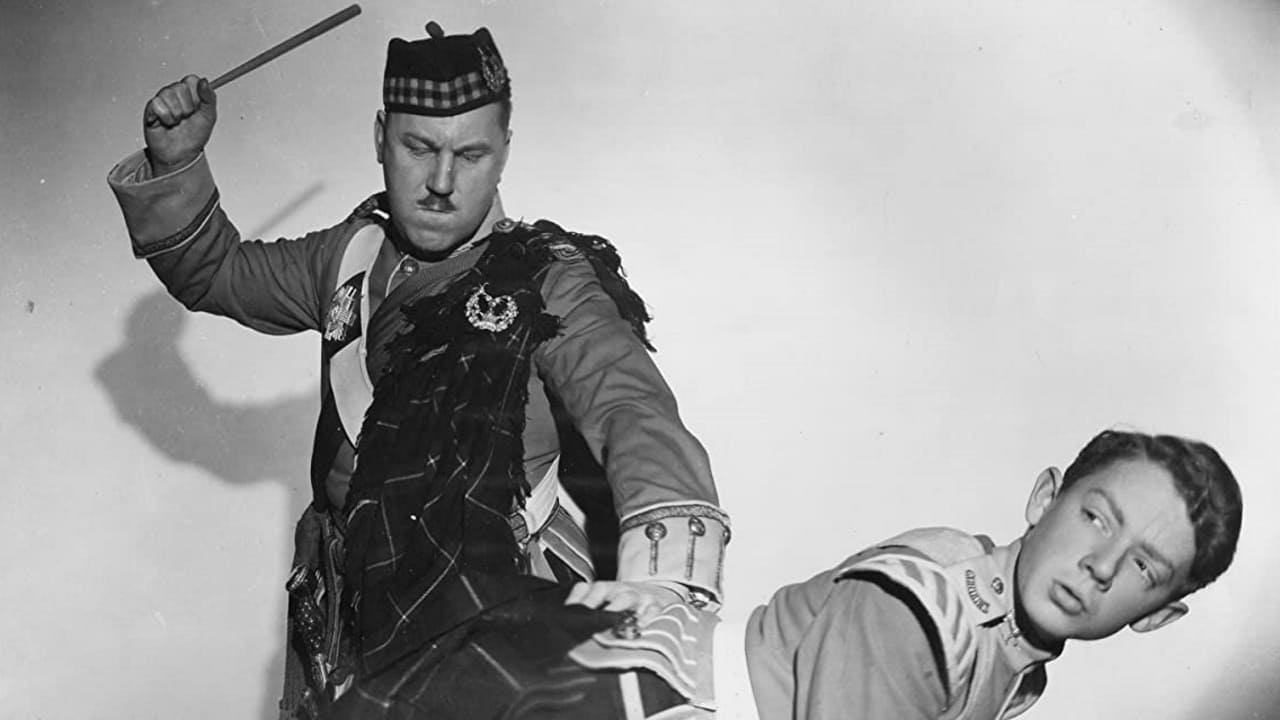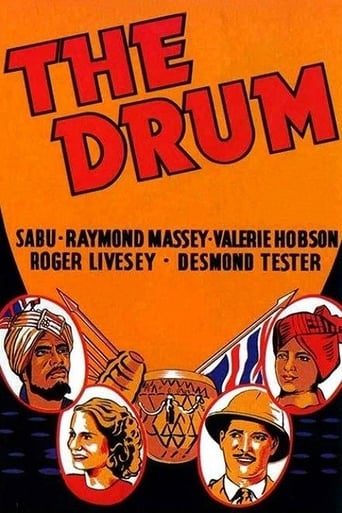

Good story, Not enough for a whole film
... View MoreA very feeble attempt at affirmatie action
... View MoreThe plot isn't so bad, but the pace of storytelling is too slow which makes people bored. Certain moments are so obvious and unnecessary for the main plot. I would've fast-forwarded those moments if it was an online streaming. The ending looks like implying a sequel, not sure if this movie will get one
... View MoreA terrific literary drama and character piece that shows how the process of creating art can be seen differently by those doing it and those looking at it from the outside.
... View MoreConsider the facts: Young Indian prince must go into hiding when his nefarious uncle murders his father to take over the throne. Protecting the English (replacing the silly wart-hog and meerkat), the prince tries to reclaim his destiny and bring liberation to the people while warning the British of the danger to themselves. Lavishly produced and crowd-pleasing, "Drums features" superb performances by Raymond Massey as the villainous uncle and Sabu as the charming boy meant to be king. Sabu's non-acting is completely winning, and his friendship with British drummer Desmond Tester endearing as a vision of peace between different cultures. A fine British cast supports Sabu, with Valarie Hobson and Roger Livesay likable heroes out to protect the young prince.Certainly made as a valentine to the British rule of India and to show the reign of the English in a favorable light, this might not serve to tell all of the truth about the British infiltration on the people of India. As entertainment, it certainly strives to present a favorable view of one side of the story, if not exactly presenting an opposite point of view. Historically, it may ring a few falsehoods to those who have studied the history of this time in Indian history. The viewer will have to take it upon themselves to make up their own mind of what is close to fact and what is more fantasy, or at least, propaganda.
... View More...nevertheless I ended up greatly enjoying THE DRUM! Conceived as a vehicle to cash in on the popularity of child star Sabu (who'd just appeared in ELEPHANT BOY), THE DRUM is a film which fondly reminisces over the glory days of the British Empire. The film is set in the Northwest Frontier of India in the dying days of the Raj, where the occupying Brit troops are stiff-upper-lip possessing heroes and the Indians are divided into loyal subjects and dastardly moustache-twirling villains.Into this mix is thrown Sabu, playing a slightly conceited but nonetheless loyal young prince, whose friendship with a youthful red-headed drummer leads to plenty of laughs. The plot begins aproper when the dastardly Prince Ghul (Raymond Massey) decides to lead an uprising against the just Captain Carruthers (Roger Livesey, the epitome of the kindly British gentleman).Director Zoltan Korda possesses the ability to make his film look great, full of gung-ho battle scenes and convincing depictions of British colonialism - although the film was actually shot in Wales and most of the Indian characters are Brits in blackface! Still, Valerie Hobson is breathlessly beautiful as Carruther's sensitive wife, there's a pleasing hard edge to the violence (with severed heads tossed through windows and bloodshed) and a great climax which gives the film its title. They sure don't make 'em like this anymore!
... View MoreThis is a very typical sort of Alexander & Zoltan Korda film. It has a huge budget by British standards, lots of color and pageantry as well as a strong endorsement of the British colonial system. You are supposed to side with and root for the Brits but in 2011 and in America, I felt myself, at times, siding with the rebels. After all, this was their country and the British were the occupying force. Colonialism, the bulwark of many 1930s and 40s films, is now out of fashion.The film is set in the kingdom of Tokot. I presumed this place was a fictional place someplace around the Muslim nations of Afghanistan or Pakistan--but the real Tokot is near Sudan in Africa. I assumed it was Asian because the people looked Asian--and not the least bit Sudanese. Their leader is about to sign a treaty of friendship with the British. In other words, he will remain in power .but be 'protected' by the British. However, his people are against this treaty and his brother (Raymond Massey) is planning on using this as a way to seize power. However, after the assassination, the man's son (Sabu) escapes and a frantic search commences to kill the boy who is the rightful leader. However, the main focus through all this really is the British army—and shows what is happening mostly through their perspective. In other words, while Sabu was a huge star for Korda, he really is more of a supporting character. So the main theme is the safety and health of these soldiers and whether or not they'll survive Massey's scheming."The Drum" is a pretty good film but I couldn't help but feel that compared to Korda's other epics, it's a bit bland and easy to skip. Now I am not saying you should—it's a decent film. But I would recommend you download and watch his other films first. It's easy—just follow the links on IMDb.
... View MoreThe Drum is perhaps a little too short, and the story is slow-moving to start with. However, the story is a great one, and does have some memorable scenes especially the banquet scene which is very tense and the ending which is really quite stirring.The Drum is also ravishingly photographed, the cinematography is gorgeous and does justice to the splendid costumes and sets. John Greenwood's music is also a nice touch, while the script is good and Zoltan Korda does a fine job directing. The acting is also good enough, Sabu is very beguiling and Roger Livesey is likable and benevolent. For me, Raymond Massey stole the show, he is truly wonderful as the irredeemably swinish villain.All in all, well recommended, also the political incorrectness actually didn't bother me, but I'd say The Four Feathers is better. 8/10 Bethany Cox
... View More